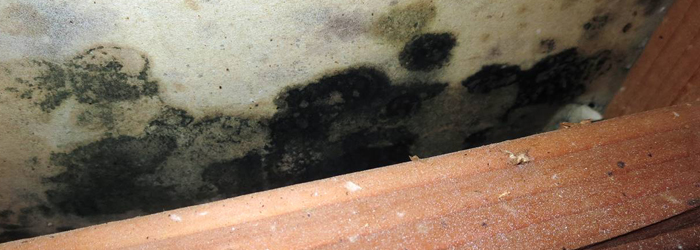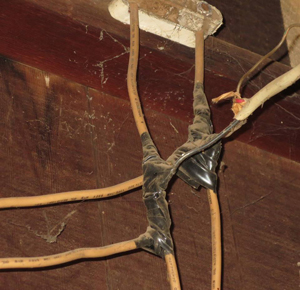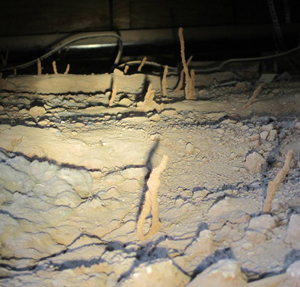Are There Nightmares Hidden in that Dream House?
 17 January 2017
17 January 2017 

What You Need to Know About the Home You Want to Buy
Buying a house is one of the biggest, most costly decisions you make in life. So, it’s always a good idea to have a home inspection before sealing the deal. The inspection can turn up issues for the buyer to repair or pay for, and in rare cases it may turn up something that can even lead you to stop the sale.
Of course, reputable home inspectors will never say: “Don’t buy this house.” But they can turn up serious – expensive issues. A trusted home inspector would never decide for a client, but try to give a client information for making a qualified decision.
Consider The Issues
It is recommend that buyers consider the problems often seen in Arizona and the possible cost of fixing them:
1 | Roof
An inspector can tell you if there cracked tiles or deterioration of asphalt shingles. An inspector should also to go into the attic looking for signs of leaks and damage to insulation, according to Karlquist. A home inspection can also turn up evidence of leaks on walls and ceilings. If it’s an older home, it could cost from $15,000 to $20,000 to replace the entire roof. Just making repairs could cost $8,000 to $10,000.
2 | Heating and Air Conditioning Systems
Although the HVAC system is may still be running properly, a system that is 20 to 25 years old will probably need replacing in the next couple of years at up to $10,000 to $15,000 or more, depending on the size of the house.
3 | Plumbing
An inspector should look at sinks and toilets as well as laundry facilities and the refrigerator to spot any leaks. Most leaks can generally be fixed at minimal cost. It’s also possible there are old plastic supply hoses on all plumbing fixtures. These hoses can swell and leak eventually. You can ask that the seller replace them with braided stainless steel hoses with angle stops that have a quarter-turn option. If the seller doesn’t, you need to do this after buying the house. Possible repairs would cost a few hundred dollars or less. And remember, leaks that never get fixed can lead to mold and mildew.
A bigger problem might be polybutylene piping that can be in homes built in the 1980s. This plastic piping can deteriorate due to oxidants naturally present in the water system. It can cost thousands to replace these pipes, but thankfully most homes that had this problem have been fixed by now.
4 | The Electrical System
 Most problems with electricity result from homeowners’ do-it-yourself fixes, Karlquist says. That can include improper work on an electrical panel or in installing new outlets. Besides repairing work done poorly, replacing and updating a panel could cost up to $2,000, depending on the size of a home. If you don’t replace the panel initially, you may have to do it later to install upgraded appliances. Many older homes need to have ground fault circuit interrupter outlets (GFCIs) installed as well.
Most problems with electricity result from homeowners’ do-it-yourself fixes, Karlquist says. That can include improper work on an electrical panel or in installing new outlets. Besides repairing work done poorly, replacing and updating a panel could cost up to $2,000, depending on the size of a home. If you don’t replace the panel initially, you may have to do it later to install upgraded appliances. Many older homes need to have ground fault circuit interrupter outlets (GFCIs) installed as well.
5 | Drainage and Dry Rot
Improper drainage of storm water can damage a home’s foundations. This can be common in Arizona where many homes don’t have gutters. When water sits for a long time near the base of a home where the ground is often soft, the soil can swell. Over the years, flooring can even “heave” due to water that seeps under the slab. That can eventually lead to costly foundation repairs.
Heavy moisture can also get inside the outside stucco covering of your home through tiny cracks, seep into your drywall, and cause mold and similar sticky issues.
If rain falls directly on an exterior door during storms, it can compromise the framing if not the door itself. The wood can be soaked and swell or even rot.
6 | Termites
 Almost every Arizona home will eventually have termite problems. But regular inspections and action can wipe out those critters. So have a termite inspection done before you buy. You will most likely see signs of termites on the concrete stem wall of your home, that small section at the bottom of exterior walls where stucco or siding ends. That’s where mud shelter tubes may be crawling up the concrete aimed at getting termites into the home’s wood frame.
Almost every Arizona home will eventually have termite problems. But regular inspections and action can wipe out those critters. So have a termite inspection done before you buy. You will most likely see signs of termites on the concrete stem wall of your home, that small section at the bottom of exterior walls where stucco or siding ends. That’s where mud shelter tubes may be crawling up the concrete aimed at getting termites into the home’s wood frame.
Take a good look at all these issues and you can have more peace of mind if needed repairs are done before you buy.
###
Photo Credit:
- Header: Hidden Mold
- Top body pic: Bad roof shingles
- Middle body pic: Improper electrical
- Bottom body pic: Termite tubes
RELATED CONTENT:
- DIY Q&A: 5 Home Inspector Red Flags
- Foundation settling: Signs and Symptoms
- Blog: Do You Need to Hire a Handyman?
- Remodeling: 5 Must-Do Fixes in Your Aging Home
- Zipcode Search: Trusted contractors and home improvement service providers
Print this page
recent post
- Duck, Duck, Duct! How Often Should Ductwork Be Cleaned?
- Vinyl vs. Fiberglass Windows: Which Is The Better Choice Of Replacement Window?
- We May Be The Grand Canyon State, But The Rocky Mountains Are Important For Arizona
- Welcome to Arizona! Things A Newbie to Arizona Should Know
- The Pros & Cons of Buying A Flipped House
- Getting In On The Ground Floor
- Why It’s More Critical Than Ever To Get Your AC Serviced Before Summer
- The Reality of Remodeling
- What To Look For When Comparing Your Roofing Quotes
- What To Expect When Buying New Windows & Doors
